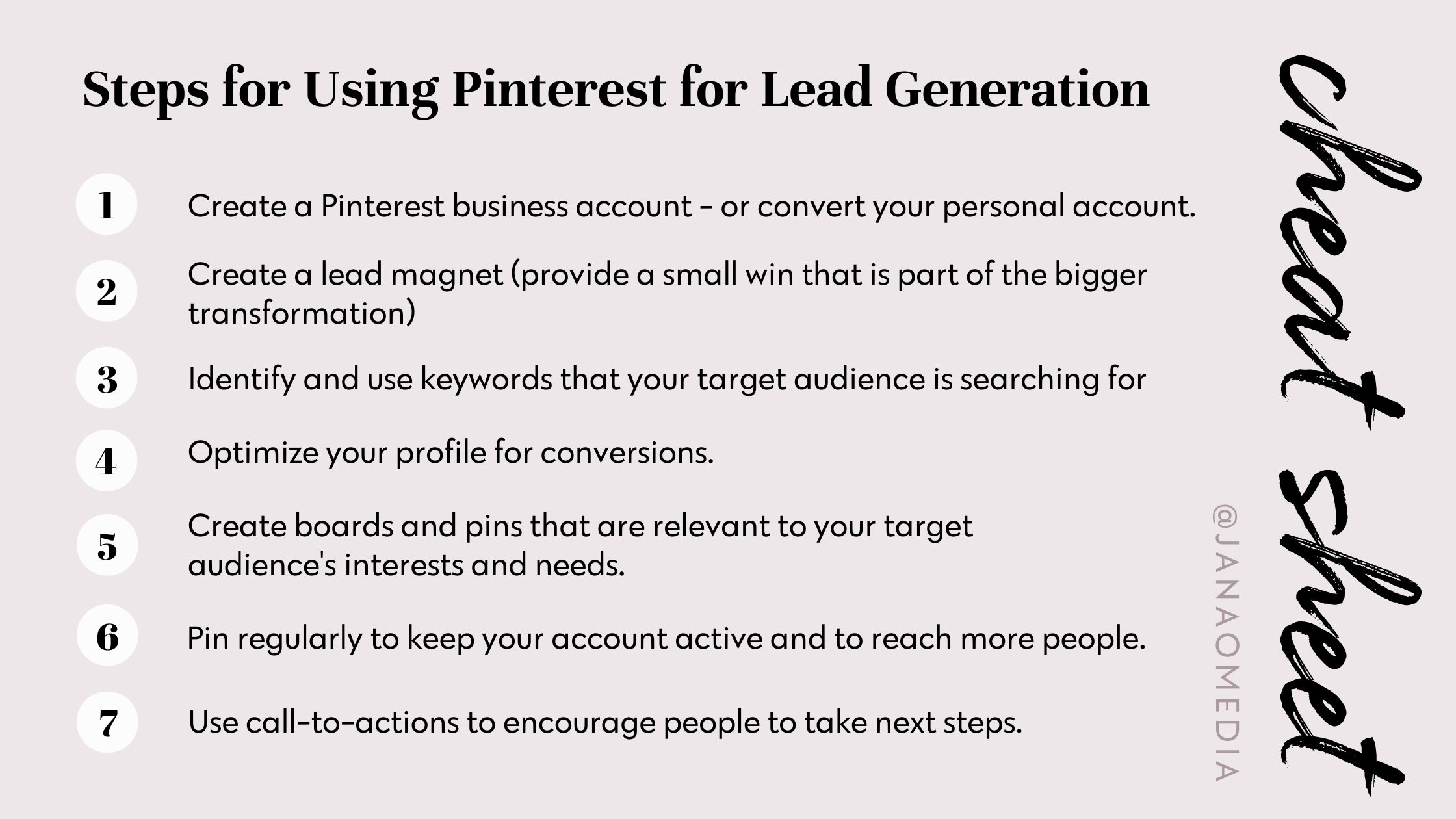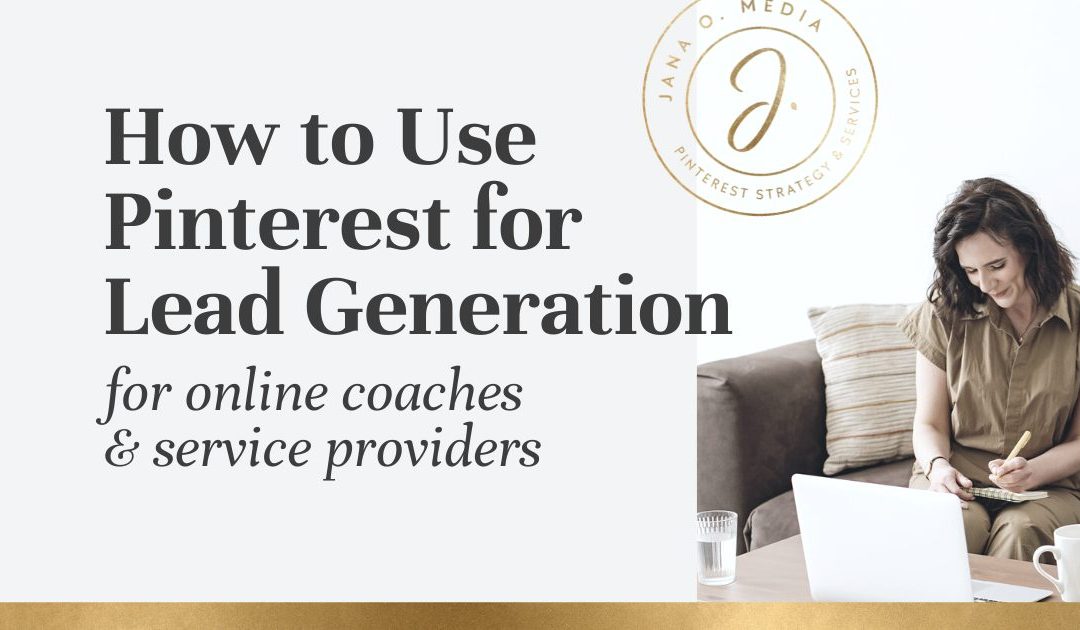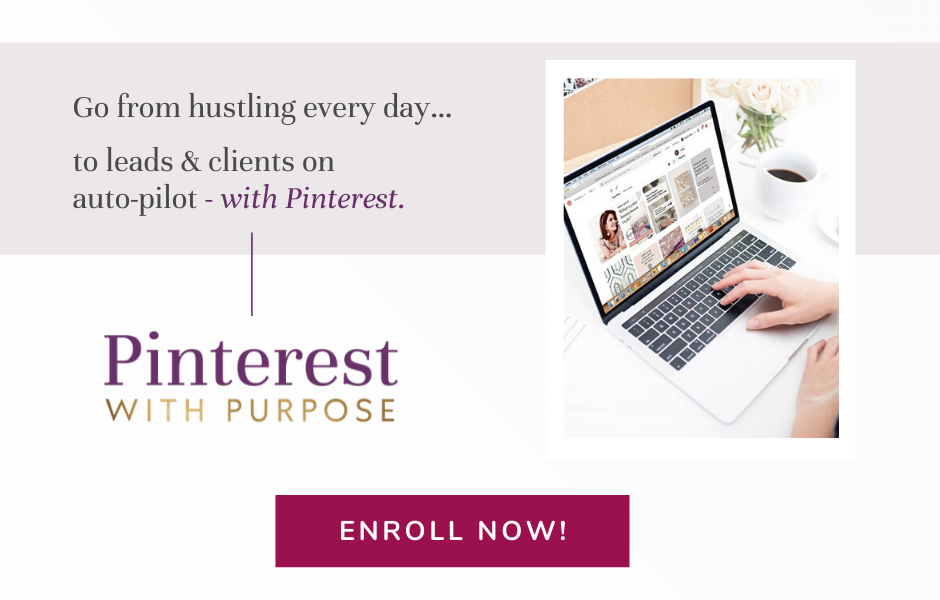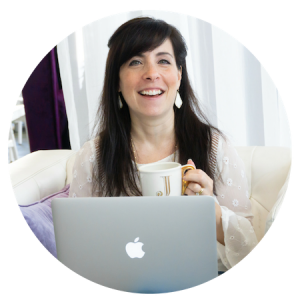So… You’ve been hearing that other coaches and service providers are using Pinterest to attract clients, right?
👉🏼 Maybe another health coach in your mastermind mentioned she uses Pinterest to grow her email list with ideal clients?
👉🏼 Or your favorite podcast host mentioned that Pinterest is great for marketing web design and branding packages?
👉🏼 Or perhaps you’re seeing Pins on Pinterest from your “competitors.” (I don’t really believe in competitors in the online space, but you know what I mean!)
Bottom line: You don’t quiiiiiite understand how to use Pinterest for lead generation in this way?
Well… You’re not the only one who is a little vexed by this. 🙂
A Pinterest strategy for lead generation is different from a regular Pinterest strategy because the focus is on capturing leads and converting them into clients.
(While a regular Pinterest strategy might focus on increasing website traffic or brand awareness, a lead generation strategy is more targeted and specific.)
So because it’s different… It’s not always clear from the outside how it’s working for people.
But, good news… In this blog post, I’m going to clear it right up for you!
Ready? Let’s review the ins and outs of this, starting with…
How to Use Pinterest for Lead Generation: A Few Hallmarks
As mentioned above, a Pinterest strategy for lead generation will be different in many ways than the strategy used by a different type of entrepreneur. (For example: an e-commerce seller or an influencer that monetizes with brand sponsorships.)
Here are some of the key differences between a Pinterest strategy for lead generation – vs. a “regular” (Shall we say, garden variety?? 🪴) Pinterest strategy:
1. The target audience:
A lead generation strategy targets a specific audience that is interested in your coaching, consulting, or service-based business. The pins and boards created are geared towards this audience’s interests and needs, rather than those of a general audience.
Example: I have a client who is a style coach. She works with young executives to curate a work wardrobe. Her pins and boards are related to workwear and personal brands – they are not general boards like “Spring Outfits.”
The influencer might actually *want* to cast a wider net – because her currency is engaged followers and reach.
But since we’re generating leads for this coach, we want to get in front of a more specific person – with specific and strong desires for a particular outcome. (Even it that means we get seen by fewer people overall.)
2. The content you create:
The content created for a lead generation strategy is designed to capture leads and encourage conversions.
This means that you have a specific content strategy that is designed to give ideas and inspiration – but *ALSO* highlight the “gap” that exists between what they can learn from you for free – vs. what is reserved for paid clients.
It also involves using lead magnets to capture leads. More on that below…
3. The calls-to-action:
Calls-to-action are an important part of a lead generation strategy. When your goal is leads, pins and descriptions will often include calls-to-action that encourage people to click through to a landing page, sign up for an email list, or request a consultation.
So yes… A Pinterest strategy for lead generation is more targeted and specific than a “regular” Pinterest strategy. The focus is on capturing leads and converting them into coaching clients (or clients for your offers). This will require a different approach – and a different approach to content!
Now let’s cover the steps of that strategy…
(Pssssst…. You can 📌 pin this article for reference to your “Pinterest marketing” board:)

How to Use Pinterest for Lead Generation: A Proven Strategy (Step by Steps)
As a Pinterest strategist for coaches, I’ve been perfecting this strategy for 7+ years now. Here’s what I teach clients and course students how to do:
(Note I teach the details of each step in my course, Pinterest with Purpose. I also offer 1:1 Intensive sessions in which we work together privately to get your profile and strategy in place.)
1. Create a Pinterest business account: Start by creating a business account on Pinterest – or converting your personal account. This will give you access to features like Pinterest Analytics and Promoted Pins, which can help you track your results and reach a larger audience.
2. Create a lead magnet: This could be as simple as a checklist or an email series that teaches a specific part of your process. Or it could be more advanced, like a webinar. This lead magnet is usually designed to provide a small win that is part of the bigger transformation provided by your coaching, consulting, or services.
Examples of lead magnets that have worked well for my clients and students:
-
-
-
-
- A “Should you be doing kegels?” Quiz
- A PDF guide to thriving with autoimmune disease
- Swipe copy for pitching yourself as a podcast guest + training
- 3 recorded guided meditations
- A free Pinterest marketing masterclass (Oh hey, that’s mine! 😉
-
-
-
3. Optimize your profile with keywords: Make sure your profile is optimized for your target audience. Identify and use keywords that your target audience is searching for in your profile name, bio, and boards.
4. Optimize your profile visually – for conversions. Make sure it’s clear who you help and how you help them. And be sure there’s a CTA to join your list or apply to work with you.
5. Create boards and pins that target your audience: These need to be relevant to your target audience’s interests and needs. For example, my client who is a hormone health coach, has boards like “Balancing Your Hormones,” “PCOS Remedies,” and “Thyroid Health.”
6. Pin regularly: Pin regularly to keep your account active and to reach more people. Aim to pin two times a week to start – to develop a habit and start building your body of work on Pinterest. Use a scheduling tool (the native Pinterest scheduler or an approved third-party one) to save time and be consistent.
7. Use keywords: Use keywords in your pins, board titles, and descriptions to make it easier for people to find your content when they search for your topics on Pinterest.
8. Use call-to-actions: Include calls-to-action in your pins and descriptions to encourage people to take action. For example, you might ask them to visit a blog post, landing page, or another page on your website. Or to sign up for your email list or book a consultation with you. On some types of pins, a CTA to follow or save the pin might be in order.

By following these steps, you can use Pinterest to generate leads for your coaching, consulting, or service-based business and capture those leads through lead magnets and landing pages.
Melissa, a client of mine who is a hormone and autoimmune health coach, generated 8600+ coaching client leads (organically!) in a 4-month period using Pinterest. (And she converted many of them to clients for her group coaching program!)
If you want to read more about how Melissa did this (with my help, of course!), head over and read this Pinterest traffic case study blog post. It will surely inspire you — and give you additional insight into using Pinterest for lead gen.
A Word About Pinterest-Friendly Landing Pages
Remember, Pinterest is a search engine. So more often than not, when someone finds you on Pinterest, it’s because she searched for something related to what you help with. She doesn’t usually already know, like, or trust you.
(We love that, BTW! Because Pinterest helps us always be bringing NEW people into our audiences and lists… People who are *already searching* for what we offer and create content about.)
But… the other side of that coin is this:
She likely doesn’t know, like, or trust you yet. (I know, I already said that… but it’s both an opportunity and a challenge! 🙂)
So, all this to say…
Be sure your landing page / opt-in page is detailed enough to *really* sell the benefits of your lead magnet.
If you send brand new people to simple landing page that just says, “Get the thing! Add your email here.”… but doesn’t give much context… you may not give them enough incentive to opt in.
Giving the context a new person needs is pretty simple:
Include a juicy headline, a subheading to show them they’re in the right place… and bullets that clearly convey what they will get, learn, have, etc… when they opt-in.
To see an example of a landing page that converts highly for me, you can check out this page for my Free Pinterest Marketing Masterclass.
Okay… Now let’s touch on this question…
Is Pinterest good for lead generation?
Yessss! So good!
There are three main reasons why, really. (Although I could list more!)
1. Pinterest can give your offers and content exposure to a highly targeted audience.
Pinterest users are often searching for specific products, services, or ideas. This makes it an ideal platform to target a specific audience that is interested in *exactly* what your coaching, consulting, or service-based business help with.
For example, let’s circle back to that hormone health coach. When people search for things like “Foods for Hashimotos” or “PCOS remedies,” Pinterest can show them her pins, boards, and profile.
2. We can use multiple links on Pinterest!
(No limit, like on IG where you just have your one link in bio…)
You can direct links to landing pages. Plus you can ALSO add links to any and all content you’ve created to build the case for accessing your lead magnets. This makes it easy for ideal clients to find a variety of ways to learn about your offers.
3. Pinterest is more low-maintenance than social media.
It requires less of your time than social media does. One reason is that you don’t have to engage. No commenting and DM-ing to be in favor of the algorithm. You can just pin and walk away until it’s time to pin again.
And content has a muuuuuucchhhh longer shelf-life on Pinterest, because if you use the right keywords in the right ways, your profile and pins can be found in people’s searches for months – even years. (Remember, it’s a search engine.)
(Huhhh… That’s sort of more than three reasons. 🤷🏻♀️Oh well! There are lots of good reasons to use Pinterest for lead generation. I over-delivered.)
Ready to use Pinterest to get clients for your business?
Are you an online coach or service provider? And you want to learn how to set up a Pinterest account that will grow your audience and attract clients — on autopilot?
If so, then my course Pinterest with a Purpose was created for you!
It’s a self-study e-course that walks you through *every step* of setting up your strategy and your account. It reveals the methods I perfected over YEARS doing strategic Pinterest set-ups for clients!



